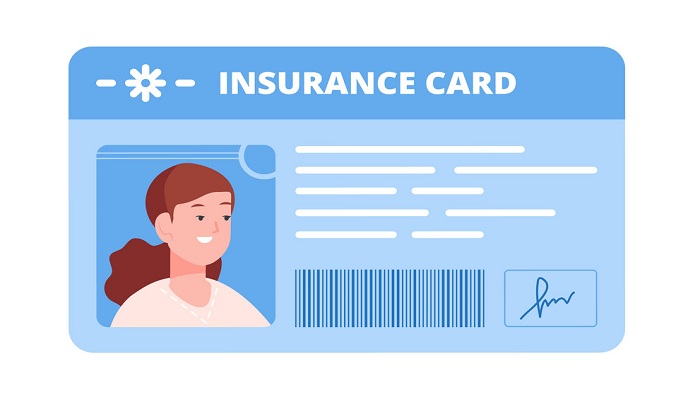
Unlocking Healthcare Across Europe: The European Health Insurance Card Leave a comment
In the era of globalization, travel across borders has become increasingly common. However, one concern that often arises when planning a trip abroad is access to healthcare in case of emergencies or unexpected illnesses.
To address this issue, the European Union (EU) introduced the European Health Insurance Card (EHIC), a revolutionary initiative aimed at ensuring that citizens of member states can access necessary healthcare services when traveling within the EU, as well as in Norway, Iceland, Liechtenstein, and Switzerland. This article delves into the intricacies of the European Health Insurance Card, its benefits, limitations, and the process of obtaining one.
Understanding the European Health Insurance Card (EHIC)
The European Health Insurance Card (EHIC) is a vital document that provides individuals with access to state-provided healthcare during temporary stays in EU countries, as well as in the aforementioned associated countries. This card allows cardholders to receive medical treatment on the same terms as the residents of the country they are visiting, often at reduced or no cost at all.
Origins and Evolution
The EHIC was introduced in 2004 as a replacement for the E111 form, which was previously used for the same purpose. Over the years, the card has undergone several updates and enhancements to improve its functionality and effectiveness. It is issued free of charge and is valid for up to five years, depending on the issuing country.
Benefits of the European Health Insurance Card
The EHIC offers a range of benefits to cardholders, including:
- Access to Medical Treatment: EHIC holders can access necessary healthcare services during their stay in participating countries, ensuring peace of mind and security while traveling.
- Emergency Care: In the event of an emergency, the EHIC guarantees access to urgent medical treatment, including treatment for pre-existing medical conditions and chronic illnesses.
- Reduced Costs: Depending on the country, EHIC holders may be entitled to reduced or even free healthcare services, minimizing the financial burden of unexpected medical expenses while abroad.
- Ease of Use: The EHIC is easy to obtain and simple to use, making it a convenient solution for travelers seeking healthcare services during their trips.
Limitations and Considerations
While the EHIC offers valuable benefits, it is essential to be aware of its limitations and considerations:
- Not a Replacement for Travel Insurance: The EHIC is not a substitute for comprehensive travel insurance. It does not cover private medical treatment, repatriation to the home country, or non-urgent medical care.
- Varied Coverage: Healthcare systems vary across countries, and the coverage provided by the EHIC may differ accordingly. It is essential to familiarize oneself with the healthcare provisions of the destination country before traveling.
- Non-Medical Costs: While the EHIC covers medical treatment, it does not cover non-medical costs such as accommodation, transportation, or lost/stolen belongings. Travelers should still consider purchasing travel insurance to cover these aspects.
- Expiry and Renewal: EHICs have an expiry date, typically valid for up to five years. It is crucial to check the expiry date before traveling and ensure timely renewal if necessary.

How to Obtain and Use the European Health Insurance Card
Obtaining an EHIC is a straightforward process:
- Online Application: In most EU countries, EHICs can be applied for online through the official EHIC website or the national healthcare system’s website.
- Postal Application: Alternatively, individuals can apply for an EHIC by completing a paper application form and sending it to the relevant authority in their country.
- Renewal: EHICs should be renewed before the expiry date to ensure continuous coverage during travels.
Using the EHIC is equally simple:
- Presenting the Card: When seeking medical treatment abroad, present the EHIC to the healthcare provider along with identification, such as a passport or national identity card.
- Treatment Authorization: The healthcare provider will verify the EHIC and provide necessary treatment as per the local healthcare regulations.
- Billing and Reimbursement: In most cases, EHIC holders will not have to pay for treatment upfront. However, in some instances, they may be required to pay and then claim reimbursement upon return to their home country.
Future of the European Health Insurance Card
As the EU continues to evolve, so too does the EHIC. Efforts are underway to improve and streamline the EHIC system, ensuring broader coverage, enhanced accessibility, and greater efficiency for cardholders. Additionally, with the emergence of new technologies and digital solutions, the process of obtaining and using the EHIC is expected to become even more convenient in the future.
Conclusion:
The European Health Insurance Card (EHIC) stands as a testament to the EU’s commitment to facilitating seamless travel and access to healthcare across member states and associated countries. By providing individuals with access to state-provided healthcare during temporary stays, the EHIC promotes mobility, security, and peace of mind for travelers. While it is not a substitute for comprehensive travel insurance, the EHIC offers invaluable benefits and serves as a vital tool for those exploring the diverse landscapes and cultures of Europe.
